Piezoelectric actuators are a type of electric actuator that use the piezoelectric effect to create mechanical force. This is done by applying an electrical voltage across two electrodes, which causes the formation of an electric field. When this field is applied to certain materials, such as crystals, the material will deform in response to the electric field. This deformation can be used to create mechanical force, which can be harnessed to power various devices. In this article, we will discuss what piezoelectric actuators are and some of their common applications!
What Is A Piezoelectric Actuator?
It consists of a piezoelectric material, usually a ceramic or polymer, sandwiched between two metal plates (electrodes). When an electric current passes through the electrodes, the piezoelectric material undergoes physical deformations and produces a force that causes the actuator to move.
Piezoelectric actuators have several advantages over traditional motor-based actuators. They are smaller in size and lighter than their counterparts, which means they require less space for installation. They can also operate in extreme temperatures without requiring complex cooling systems or lubricants. In addition, they are highly efficient since very little energy is lost in heat production, meaning they require less energy to operate. [1], [2], [3]
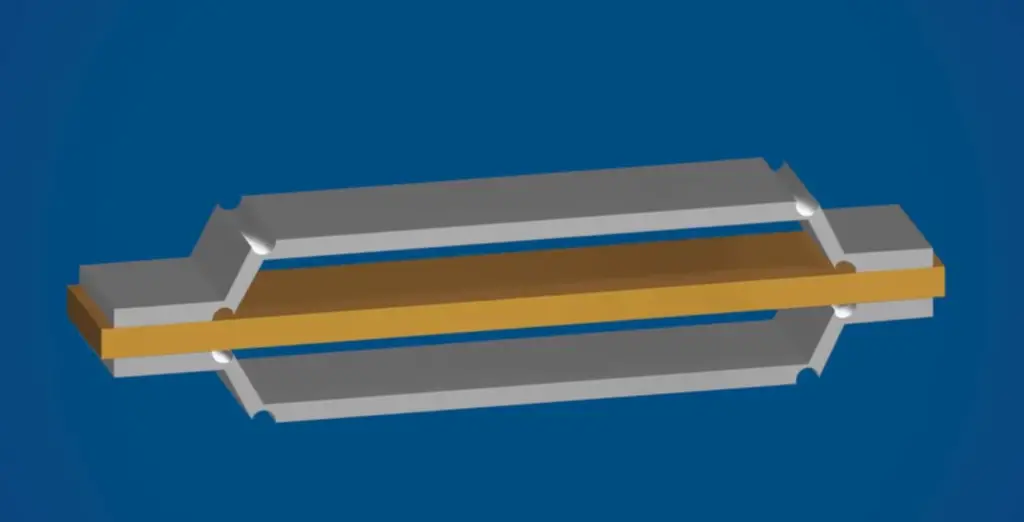
Types of Piezo Actuators
There are several types of piezo actuators, each with its own advantages and disadvantages. In this section we will discuss some of the most popular types available, including:
Piezoelectric Stack Actuators
This expansion and contraction generates a linear motion, which can be used for various applications such as controlling valves or motors, positioning optical elements, or generating vibration for ultrasound imaging.
Piezo Stack Actuators offer numerous advantages over traditional actuator technologies such as high force density, fast response times, precision position control, low power consumption, infinite life cycle (no wearout), wide range of operating temperatures and a rugged design. Additionally, they require minimal external components like controllers or amplifiers to operate as they are self-contained active elements and have built-in control capabilities.
Piezo Stack Actuators are applied in a variety of industries including automotive, medical, robotics and aerospace; they can be found in robots, fluidic systems, precision instrumentation, and many other applications requiring precise position control. They offer an ideal solution for applications where high force, fast response time and accuracy are required.
Stripe Actuators
Stripe actuators are a type of piezoelectric actuator that utilizes a unique strip-like shape to generate an electrical charge when pressure is applied. This energy can then be converted into an output movement, which makes it useful in applications such as micro-positioning and vibration control. Stripe actuators typically consist of two or more parallel layers of piezoelectric material sandwiched together with electrodes on either side. As the internal layers expand and contract upon application of a voltage, they cause the entire device (and any attached components) to move rapidly in response.
Compared to other types of piezoelectric actuator designs, stripe actuators have several advantages. They require fewer external components, making them easier to integrate into many kinds of systems. Additionally, their unique shape allows for greater flexibility in terms of motion range and speed. This makes stripe actuators well-suited for applications that require precise movements over a wide range of speeds or loads.
Longitudinal Actuators
A longitudinal actuator is an electromechanical system that uses a piezoelectric material to convert electrical energy into mechanical energy. Piezoelectric materials are substances that produce electricity in response to the application of pressure or strain. Longitudinal actuators work by creating and amplifying vibrations along the axis of their construction, typically in one direction only. This type of system is most often used in applications such as medical diagnostic devices, ultrasonic welding, industrial automation, and aerospace systems due to its ability to produce relatively large forces with small displacements and low power consumption.
Longitudinal actuators are made up of a stack of piezoelectric elements sandwiched together between two metal plates forming what is known as a bimorph. An excitation voltage is applied to this assembly, resulting in a strain field that causes the actuator stack to vibrate along its longitudinal axis. As the vibration amplitude increases, the actuator will move from one end of its range of motion (analogous to a piston) and back again.
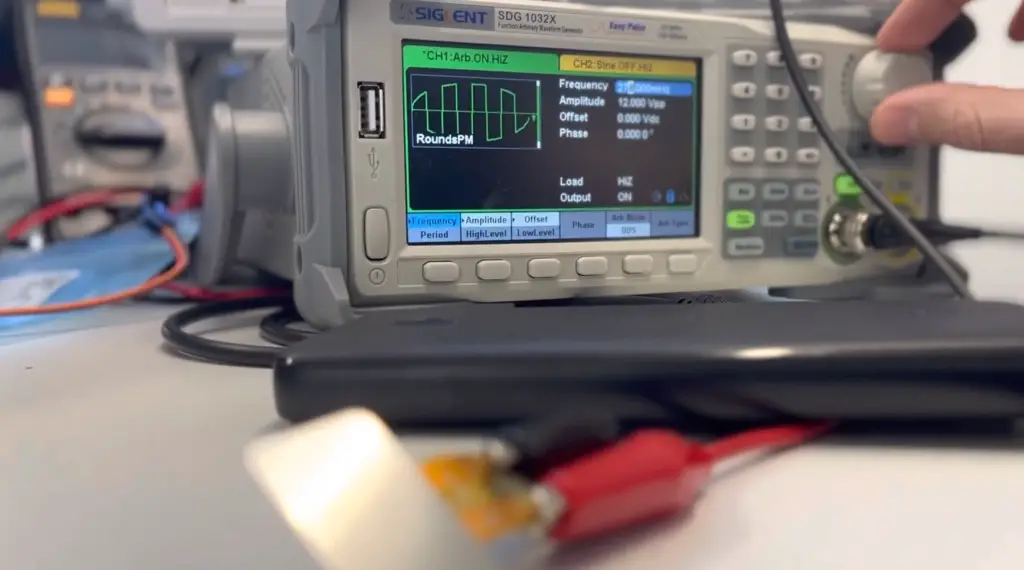
Shear Actuators
Shear actuators are a type of piezoelectric actuator design that involves the use of two piezoelectric layers that are connected and arranged in an offset configuration. When a voltage is applied, the two layers expand at different rates which creates a shearing force between them. This type of actuator has many benefits due to its simple design, reliable operation, and high accuracy when controlling small displacements.
Shear actuators can be used in applications such as precision positioning systems and vibration control mechanisms. They are typically made with ceramic or polymer materials depending on the application requirements. The most common configurations are single-axis or dual-axis designs where the piezoelectric layers can be arranged to produce linear motion or rotary motion depending on the orientation of the layered material.
Tube actuators
Tube actuators are devices used to move and control a variety of mechanical components. They consist of an inner tube, usually made of aluminum or other lightweight materials, with two concentric outer tubes. The inner tube contains the piston, which is connected to one end of the outer tubes; while at the other end of the outer tubes is an attachment point for a rod or link that will be used to transmit motion from the actuator.
Tube actuators can be powered by air pressure (pneumatic), hydraulic fluid, electric motors or manual cranking mechanisms. Depending on the type of application, there are several types available such as single-acting and double-acting cylinders, linear and rotary actuators, telescoping cylinders and rack-and-pinion actuators. Each type has its own unique characteristics, advantages and disadvantages that must be considered when selecting the right one for a particular application.
The main benefits of using tube actuators are their compact size, low weight, high force/torque ratios, fast movements and easy installation. They can also be used in tight spaces where larger cylinders would not fit due to their small diameter. Additionally, they are highly versatile, often allowing for a wide range of motion such as linear or angular movement.
Contracting Actuators
Contracting actuators are mechanical devices that control the opening and closing of fluid control valves. They are used in a wide range of applications, such as controlling the flow of water, oil, or air in pipelines and other industrial equipment. Actuators can be manual or automated depending on the application. Manual actuators require human intervention to open and close a valve while automated actuators use an electrical signal to do so. Automated actuators can be further classified into electric, pneumatic, hydraulic, and stepper motor-based types.
Actuators vary in terms of size (from tiny miniature units up to large industrial models) as well as their operation type (such as linear or rotary). The selection of the appropriate actuator for a given application will depend on several factors such as the required torque (force) to be applied, its operation speed, media temperature, and ambient environment.
Actuators are used in a wide range of industries including food and beverage production, chemical processing, pharmaceuticals, oil and gas production/distribution, automotive manufacturing and HVAC services. In addition, they can also be used for home automation systems requiring precise control over the opening and closing of various valves or other devices. [1], [2], [3]
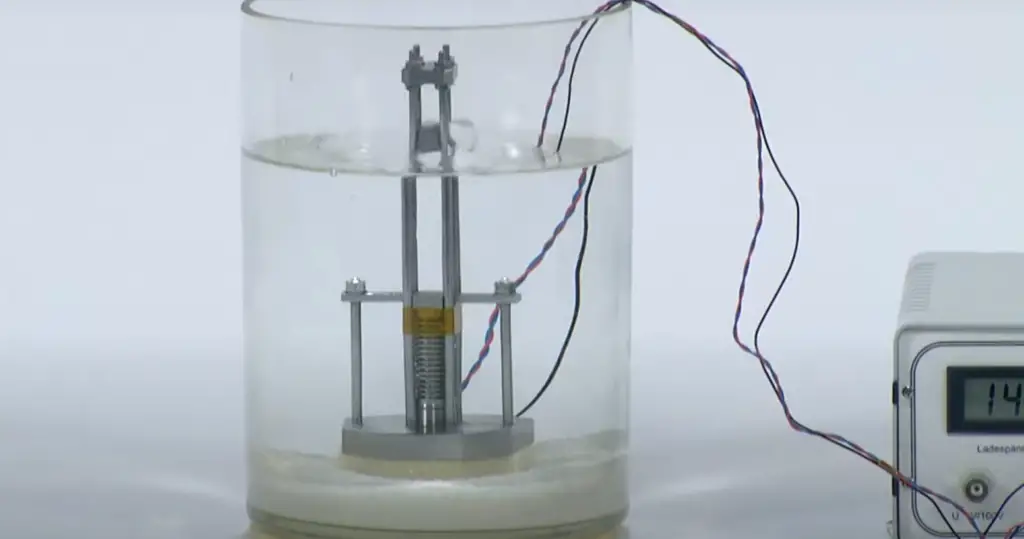
Piezoelectric Applications
Now that you know what piezoelectric actuators are, let’s discuss some of their most common applications. The main advantage of piezoelectric actuators is that they are capable of providing very precise movements, allowing them to be used in a range of demanding applications.
Aerospace
Piezoelectric actuators are widely used in the aerospace industry due to their robustness and ability to operate accurately in extreme conditions. In aircraft, they are typically used as part of the autopilot system where they control the rudder, ailerons and other flight controls. Additionally, they are commonly found on unmanned aerial vehicles (UAVs) for automation tasks such as stabilization, navigation and landing.
Medicine
Piezoelectric actuators have been adopted in various medical applications due to their precision and low vibration levels. For instance, they can be used to manipulate miniature surgical instruments inside the body during minimally invasive surgery, or for controlling valve systems that regulate drug delivery.
Precision motion control-based applications
One of the most common uses for piezoelectric actuators is in precision motion control applications. These include micro-positioner systems, optical scanning and pick-and-place operations, where the small size and accuracy of piezo actuation makes them ideal choices. Also, they are much less expensive than other types of actuators that would be used in these applications. The ability to precisely control position and velocity also allows them to be used in robotics, medical equipment, and even industrial automation systems.
Applications where force or movement is required
Precision manufacturing processes, such as machining and drilling operations, often require the application of a very precise amount of force. Piezoelectric actuators are well-suited to meet this need, making them ideal for use in semiconductor manufacturing or medical device assembly. Additionally, they can be used in optical systems that require precise positioning control, such as those found in microscopes.

Automotive industry
In the automotive industry, piezoelectric actuators are used in safety systems such as ABS (anti-lock braking systems) and ESC (electronic stability control). The actuator’s ability to rapidly move a component means that it can quickly adjust brakes and other parts of a vehicle in order to maintain optimal performance. This technology is also used in automotive electronics to provide precise movement of components like solenoids.
Medical industry
Piezoelectric actuators can be used in the medical industry to create highly precise movements, particularly in applications such as robotic surgery. Medical robots are designed to perform complex surgeries with a level of accuracy and precision that is difficult for human surgeons to replicate. Piezoelectric actuators help these robots make incredibly fine adjustments during procedures, thus reducing the risk of complications or errors.
Other medical industry uses for piezoelectric actuators include drug delivery systems, endoscopy tools, and even prosthetic limbs.
Mobile phones
Another of the most common applications for piezoelectric actuators is in mobile phones.
For example, when you press a button on your smartphone or activate a feature by tapping it with your finger, a tiny piezo actuator may be responsible for providing the haptic feedback that you feel. Similarly, the sound emitted from your phone’s speaker may come from its built-in piezo actuator.
Aerospace
Piezoelectric actuators are widely used in the aerospace industry due to their robustness and ability to operate accurately in extreme conditions. In aircraft, they are typically used as part of the autopilot system where they control the rudder, ailerons and other flight controls. Additionally, they are commonly found on unmanned aerial vehicles (UAVs) for automation tasks such as stabilization, navigation and landing. [1], [2]

Advantages of Piezoelectric Actuators
The main advantages of piezoelectric actuators are their small size, accuracy and high-speed response. They require minimal energy to operate, making them highly efficient, and they can be used in a wide range of applications due to their flexibility and robustness. Furthermore, they are relatively inexpensive compared to other types of actuators, making them an attractive choice for many industries.
They can operate at cryogenic temperatures, making them ideal for use in aerospace and space exploration. Additionally, they can be used to control fluid flow in microfluidic systems, providing a more precise way of controlling the flow than traditional valves or pumps.
Overall, piezoelectric actuators provide an efficient and reliable solution for many applications where force or movement is required. They are well-suited for precision manufacturing processes, medical equipment and robotics, as well as aerospace and automotive industry applications. Furthermore, their small size makes them highly versatile and suitable for use in a wide variety of industrial settings. With their robustness and accuracy combined with low cost and high efficiency, it is no surprise that these actuators have become so popular among engineers.
Quick response is also something worth noting, as piezo actuators can react and adjust to changes in environment almost instantly. This makes them ideal for applications where time is of the essence, such as medical robotic surgery or ABS systems. Finally, they are free from maintenance and have a long lifespan, making them an economical choice in the long run. [1], [2], [3]

FAQ
What device uses piezoelectric?
Piezoelectric devices are used in a variety of applications, including medical imaging and diagnosis, micromachining, acoustic transducers, vibration controllers, precision motion control systems, data acquisition systems, and more. Generally speaking, they are utilized in situations where high accuracy and reliability is desired.
In medical imaging and diagnosis, piezoelectric transducers can be used to create ultrasound images of internal organs or tissues that are too small or deep for traditional X-ray imaging methods to detect. Piezoelectric actuators are also employed for vibration control in industrial machinery such as machining centers and machine tools. These actuators help reduce the amount of noise generated by the machinery while providing precise speed regulation with minimal vibration.
In data acquisition systems, piezoelectric transducers can be used to measure pressure, force and acceleration of objects or liquids in a wide range of applications including automotive testing, biomedical research and materials science. Additionally, the technology is often employed for precise motion control in micro-electromechanical systems (MEMS) and other miniature devices such as portable consumer electronics like smartphones and tablets.
How does a piezoelectric actuator work?
This type of actuator uses the natural ability of certain materials, such as crystals and ceramics, to produce a small electric charge when subjected to mechanical stress. This phenomenon is called the piezoelectric effect.
The basic components of a piezoelectric actuator include a piezoelectric material (piezo-ceramic or crystal), electrodes, springs, and a housing/frame. When an electrical current is applied to the electrodes on either side of the piezo-element, it causes a displacement due to the difference in charge between them. This displacement creates pressure on the surrounding springs, which then cause the actuator to move.
Piezoelectric actuators are used in a number of applications, such as medical devices, industrial automation, robotics, and even missile guidance systems due to their small size and high precision. They can be used for precise positioning and fast response times. Additionally, they require less energy than traditional motors, making them ideal for battery-operated applications where weight and space are limited.
What is the meaning of piezoelectric actuators?
Piezoelectric actuators are electromechanical devices that use the piezoelectric property of certain materials to convert electrical energy into mechanical energy. The most common type of piezoelectric actuator is a bimorph, which has two layers of piezoelectric material attached to each other and sandwiched between two electrodes. When an electric voltage is applied across the electrodes, the two layers expand or contract in opposite directions, resulting in a bending motion. This motion can be used to generate linear force outputs or rotary motion depending on how it is mounted and driven.
What is a piezoelectric device used for?
A piezoelectric device is a type of actuator that converts electricity into mechanical energy. It can be used to actuate, or move, mechanisms such as motors, valves, and pumps. Piezo actuators are widely used in many industries because they offer both high accuracy and fast response times. They can also be used for precision positioning applications like medical scanning or robotics.
The most common type of piezo actuator is the transducer-type, which uses a stack of ceramic discs to generate an electrical field when voltage is applied to it. This electric field causes the ceramic discs to expand or contract depending on the direction of the current passing through them. By connecting these discs together in a circular series, the actuator can produce linear movement as well as rotational motion.
Piezo actuators are also used in vibration damping systems to reduce noise and improve stability in machinery. By utilizing piezoelectric transducers, these systems can detect any unwanted vibrations and then adjust their response accordingly. This ensures that all components remain stable even when subjected to high-frequency disturbances.
What is the advantage of using piezoelectric actuators?
Piezoelectric actuators offer several advantages over traditional linear actuators. They are smaller, lighter, and require less power to operate than most other types of motors. They also do not generate any EMI (electromagnetic interference) which can cause problems with other electronic components. The use of piezoelectric materials also allows for higher speeds and greater accuracy during operation.
Additionally, these actuators can often be operated in a vacuum or at extreme temperatures while still providing reliable performance. Piezoelectric actuators provide precise control over motion, making them ideal for robotic applications or laboratory equipment where exact movements must be performed. Finally, they are relatively low-maintenance compared to other motor technologies since the main wear components are ceramic, rather than metallic.
Useful Video: Piezoelectric actuators 1
Conclusion
Piezoelectric actuators have become an essential part of many industries in recent years, providing a reliable and efficient way to move parts into precise positions. These actuators are durable and require very little maintenance, making them ideal for applications where precision accuracy is required. Piezoelectric actuators can also be used in combination with other components to create complex motion control systems.
The use of piezoelectric materials is increasing as more research reveals their various advantages in different fields. As technology continues to develop, piezoelectric actuators will continue to expand into more areas of industry, improving performance while reducing costs.
This guide has provided information on what piezoelectric actuators are and how they work. It has highlighted their various applications and discussed the advantages of using piezoelectric materials. Hopefully, this guide has provided helpful information for those interested in learning about what a piezoelectric actuator is and how it can be used.
Thank you for reading! We hope this article has helped you gain an understanding of what a piezoelectric actuator is and why it is such an important part of modern industry. If you have any further questions or would like to learn more, please don’t hesitate to reach out to us!
References
- https://www.elprocus.com/piezoelectric-actuator/
- https://www.americanpiezo.com/piezo-theory/actuators.html
- https://www.sciencedirect.com/topics/engineering/piezoelectric-actuator











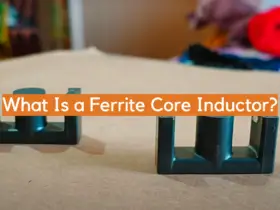

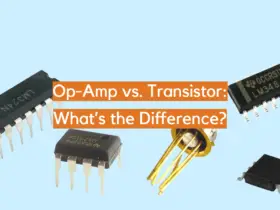
Leave a Reply